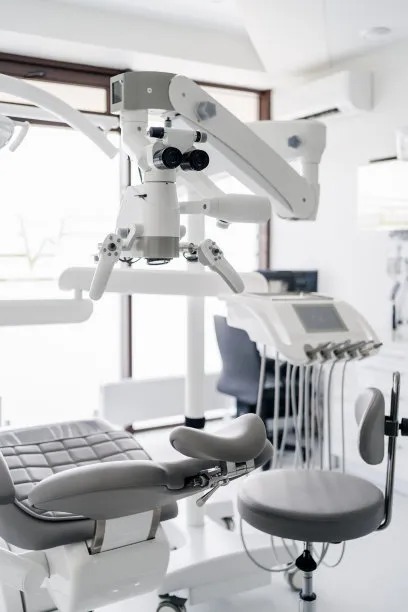Essential Precautions to Take Before and After Your Dental Filling Appointment for Optimal Results
Summary: Understanding the essential precautions to take before and after your dental filling appointment can enhance the effectiveness of the treatment and ensure a smoother recovery process. This article outlines critical steps that patients should follow in preparation for their appointment, such as dietary considerations, oral hygiene practices, and understanding the filling materials used. Post-appointment care is equally important, which includes managing discomfort, adhering to dietary restrictions, and ensuring proper oral hygiene. By following these guidelines, patients can optimize their dental filling results and maintain better oral health.
1. Preparation Steps Before Your Appointment

Preparing for a dental filling is crucial to ensure that the procedure goes smoothly. One of the first steps involves scheduling an appointment with adequate time before any major events, like a big meeting or family gathering. This allows you to recover from any side effects of the procedure, such as numbness or discomfort, without feeling rushed.
Another vital preparation step is reviewing your medical history with your dentist. Inform your dental professional about any medications you are taking, allergies, or existing health conditions. This information can help the dentist choose the most suitable anesthetics and materials required for your fillings.
Lastly, it鈥檚 wise to avoid eating a heavy meal right before your appointment. Having a light snack can keep you comfortable during the procedure, but its recommended to not have solid food if youre expecting to receive local anesthesia, as it can cause numbness and make eating difficult afterwards.
2. Dietary Considerations After Filling Treatments
After receiving a dental filling, being considerate about your diet is essential for optimal recovery. For at least the first couple of hours post-procedure, avoid consuming hot, crunchy, or sticky foods. Hot food might cause discomfort to a numb mouth, while crunchy or sticky items could dislodge the filling.
Additionally, it is advisable to stick to soft foods for the first 24 hours after the filling. Foods such as yogurt, mashed potatoes, and smoothies can be good options that minimize strain on the newly treated area. This helps in preventing any accidental damage that might occur if hard foods are consumed too soon.
Hydration is also important. Drinking plenty of water after the procedure (allowing for some time to pass after the anesthesia) can help rinse away any debris while also supporting overall recovery. However, remember to avoid using straws for the first few days as they can create suction that may harm the filling.
3. Maintaining Oral Hygiene After Fillings
Oral hygiene is paramount after undergoing a dental filling. Although it may be tempting to neglect your regular dental care routine because you just had a procedure, maintaining proper hygiene can significantly contribute to the longevity of the filling. Wait for a few hours after the procedure, until the anesthesia wears off, before brushing your teeth. Use a soft-bristled toothbrush to gently clean the area surrounding the filling.
Flossing is another critical part of your oral hygiene routine. It is essential to continue flossing daily but to be extra gentle around the filling. This helps prevent plaque build-up and reduces the risk of cavities surrounding the filling. Make sure to visit your dentist regularly for check-ups to ensure the quality and longevity of your dental work.
An additional precaution is to be mindful of dental products you use. Opt for fluoride toothpaste that can strengthen the enamel around the filling and keep your mouth healthy. Over-the-counter mouth rinses can also be helpful in maintaining oral hygiene, but consult your dentist if youre unsure about which products are best for your situation.
4. When to Seek Dental Attention Post-Procedure
After receiving a dental filling, its crucial to understand the signs that may require you to seek dental attention. If you experience prolonged or severe pain in the filled tooth, this could indicate an issue with the filling or the underlying tooth structure. Do not hesitate to contact your dentist if the discomfort persists beyond a few days.
Another reason to revisit your dentist is if you notice any sharp edges or rough spots around the filling. These can cause irritation to your tongue or cheeks and may require reshaping by a professional. An ill-fitting filling can also lead to food trapping, which can lead to further complications.
Lastly, if you begin to see discoloration or darkening of the filling, it can also indicate deterioration of the material or other underlying problems. Such changes should be addressed promptly by your dentist to prevent further complications and to ensure that your dental health remains intact.
Summary:
In conclusion, taking essential precautions before and after your dental filling appointment is vital for achieving optimal results. From preparing adequately for the procedure to ensuring proper dietary choices and maintaining oral hygiene, each step plays a significant role in your recovery and overall dental health.
By recognizing when to seek dental attention post-procedure, you can tackle potential issues head-on. Remember, a proactive approach to your dental health can lead to longer-lasting results and a healthier smile.
This article is compiled by Vickong Dental and the content is for reference only.



